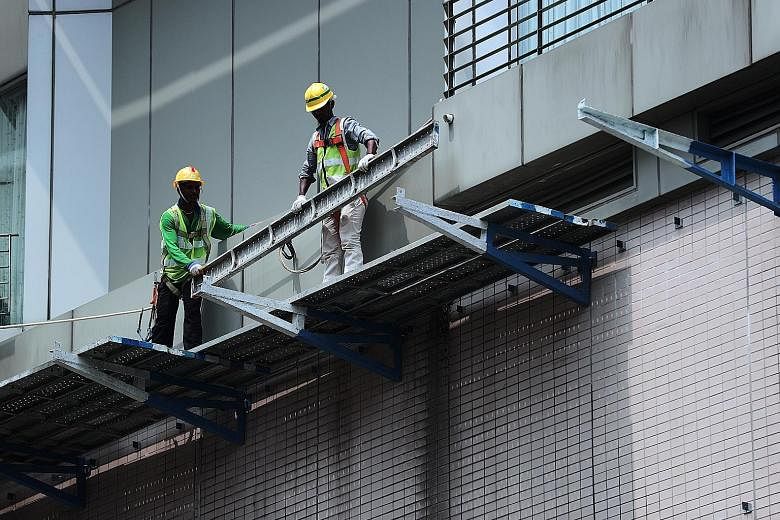The number of workers who died as a result of a fall from height declined from 24 in 2009 to eight last year, partly due to the Government and industry partners' concerted efforts to raise awareness and train workers.
The Ministry of Manpower (MOM) also conducted more inspections, said Minister of State for Manpower Zaqy Mohamad yesterday. In September, 300 checks were done on 250 companies, after which the MOM issued four stop-work orders and 80 fines totalling $91,000.
These were meted out to punish work safety oversights, such as the failure to ensure platforms on scaffolds had toe-boards and sufficient guard rails, Mr Zaqy said.
While things have improved, there have been four deaths recorded to date this year.
"We need to do more... MOM's efforts alone will not be enough. The industry also needs to take greater responsibility in protecting our workers," said Mr Zaqy, who was speaking at the Work at Height Symposium held at the Institute of Technical Education (ITE) College East.
A second round of inspections is planned for February next year.
Addressing 500 industry partners and students at ITE pursuing related courses, Mr Zaqy said a fall from height remains a leading cause of injuries.
Of the four who died from a fall from height this year, two were in construction, one was in manufacturing and the last was classified as "others".
A key theme at the symposium - itself set up to tackle the issue - was the adoption of technology to perform high-risk tasks.
Local company CYC International was commended by Mr Zaqy for its adoption of a cleaning robot that could climb up to 30m, nullifying the need for workers to climb high structures for cleaning.
CYC managing director Danny Chua said: "The workers even told me to buy more. I also have an elderly worker who has been in the industry for so many years. He, of all people, knew that the robot is a game changer."
By harnessing technology, CYC reduced the manpower requirements from 15 to four workers, saved about $150,000 and halved the time taken for a project. These savings included eliminating the need for workers to set up and dismantle scaffolds during their day-to-day work.
At the symposium, ITE College East also showcased its new Workplace Safety and Health Centre, which trains students pursuing courses in engineering and the applied and health sciences to be able to handle work-at-height safety. Its facilities include virtual reality sets and a mock scaffolding for students to gain hands-on experience.
The institution has a similar centre in its College West campus, opened in 2016, that has already trained nearly 4,000 ITE students.
Dr Yek Tiew Ming, principal of ITE College East, said the aim is to train and certify all 1,000 of its students pursuing related courses every year.
Keynote speaker Lim Peng Hong, the managing director of engineering firm PH Consulting, said measures to protect workers should be included in buildings as early as the design stage. Designs should take into account how the structure can be subsequently maintained, cleaned, or even decommissioned in a low-risk manner, he said.
"We have to address these risks at the source, through the use of design," Mr Lim noted.
Mr Zaqy added that workers' health should also be taken into consideration, as a worker with ill health could faint while performing his job at height.
"The consequences could be disastrous," he said.


